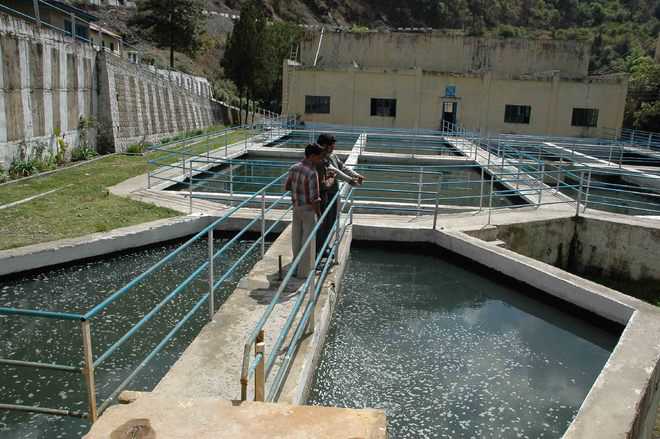
A treatment plant near the Ashwani Khud near Shimla.
Kuldeep Chauhan
Tribune News Service
Shimla, March 2
The threat of a hepatitis outbreak continues to loom large on Shimla and Solan towns as sewage from three sewage treatment plants (STPs) finds its way into Ashwani Khud water schemes. The three STPs are located upstream of the two water schemes and have not been working since the time they were set up.
Health experts and virologists warned that hepatitis outbreak may compound in the years to come when the three STPs— 4.44 MLD capacity Malyana STP, 19.35 MLD capacity Lalpani STP and 0.76 MLD capacity Dhalli plant— would run to their full capacity, as till date, the whole city is not connected to the STPs. These could discharge up to 24.55 MLD ‘treated or untreated sewage’ into the Ashwani Khud located downstream.
It was perhaps a ‘planning failure’ as the three STPs were set upstream of the Ashwani Khud water supply schemes. Health experts said the 10.80 MLD capacity Ashwani water scheme was inaugurated in 1995-96 while the STPs came up much later, overlooking the placement. As an added disadvantage, these are not working.
According to the inputs gathered by The Tribune from different government sources, the three STPs were receiving about 6.40 MLD effluents daily from Shimla city, whereas these have a combined capacity of treating about 24.55 MLD of sewage.
“As of now, the STPs are not even receiving one-fourth sewage of their capacity. You can imagine the level of contamination if the entire sewage, treated or untreated, finds its way into the khud,” the health experts said.
What makes the condition for the hepatitis virus conducive in winter months is low dissolution of sewage in the natural streams due to lean discharge of water in the catchments, virologists observed.
During rains, the sewage flow is diluted due to increased water discharge in the Ashwani Khud. So the repetitive hepatitis outbreaks are taking place only in winter months, they said.
Teams of experts from National Institute of Virology, Pune, and National Centre for Diseases Control (NCDC), New Delhi, have recommended not to allow sewage water into the collection point of the Ashwani Khud water scheme. Both the water schemes of Shimla and Solan are located downstream of the STPs, raising chances of water contamination.
Irrigation and Public Health (IPH) and Shimla Municipal Corporation (SMC) have stopped the supply of water from the Ashwani Khud since January 2, soon after the current outbreak of jaundice in Shimla.
The city has reported more than 1,620 jaundice cases, out of which nine have died, while Solan has reported 620 cases so far.



























